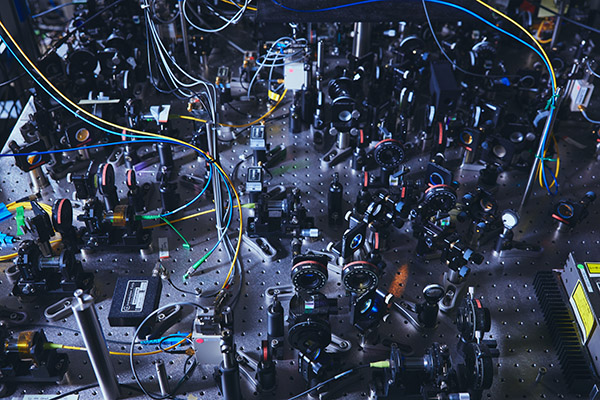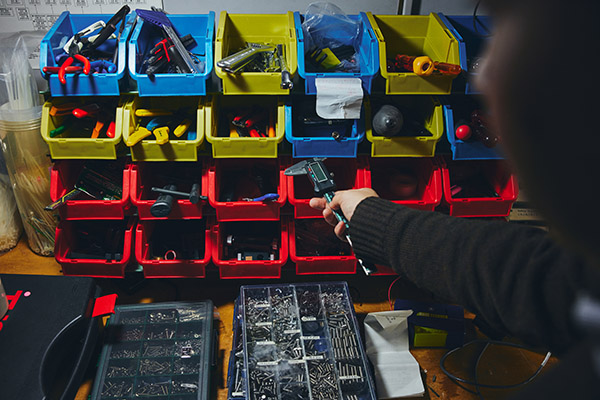Key Point
Time is an important social infrastructure that is shared by people worldwide. As research progresses in various countries towards the realization of the redefinition of the second, we have achieved high uptime operation of optical lattice clocks using new technology. Research in the field of metrology that accurately checks the definition of second, supports everything from the world’s infrastructure to the future science. We interviewed Senior Researcher Kobayashi Takumi of the Time Standard Research Group, Research Institute for Physical Measurement, National Metrology Institute of Japan (NMIJ), whose work earned the AIST Paper Award.
What makes this research amazingThis study provided evidence of the ability of the optical lattice clock at NMIJ to contribute to International Atomic Time (TAI) and Coordinated Universal Time (UTC).
It has received high international recognition, including invitations for presentations at international conferences and participation in international collaborative research.
What factors led to achieving this world-first result?
KobayashiOptical lattice clocks are complex, and even small environmental changes—such as the presence of human in the lab—can cause temperature fluctuations, affecting stability. We achieved a high uptime operation by combining new automation and remote control technologies to enable unattended operation. The timing of the experiment was also significant, as it coincided with the outbreak of the new coronavirus, and there was a growing trend towards remote control of experimental equipment.
Despite lockdowns and low uptimes in various countries, we were able to maintain an average uptime of over 80% for six months. Four years have passed since the paper was published, but there are still no records that surpass this result. Other institutions in Japan and overseas are spending huge amounts of money on development or are working with companies, so the scale of their research is different. Despite these challenges, AIST was able to demonstrate world-leading results in this highly competitive field.
 A complex device made by combining lasers and many devices.
A complex device made by combining lasers and many devices.
How do you feel about receiving high recognition domestically and internationally?
KobayashiWe presented our paper in 2020, but it was only over the next few years that I really started to feel the growing recognition I was receiving both in Japan and overseas. I was also able to participate in international joint research projects that involved comparative experiments with various European countries, and I could really feel the anticipation and development of the research results. In 2024, I was also invited to give a lecture.
In order to revise the definition of the SI unit of time, the second, it is crucial for countries to collaborate in developing more “clocks” that can monitor the International Atomic Time (TAI) and Coordinated Universal Time (UTC) more accurately and for longer periods, and to ensure redundancy.
I believe there are two primary research directions towards the development of clocks: improving uptime and improving accuracy. In the area of accuracy, Professor Katori's group at the University of Tokyo and RIKEN, as well as research institutes in the United States, are pursuing the ultimate in accuracy, and are playing a major role in advancing the international discussions on revising the definition of the second.
I think that we are being evaluated for the fact that we are pursuing a different direction, the uptime rather than following the same direction as these research institutes.
In 2024, I was invited by the National Institute of Standards and Technology (NIST) to study cutting-edge technology. From now on, in addition to improving the uptime, I plan to improve accuracy, increasing our contribution to TAI and UTC.
Please tell us about any new findings based on this result?
KobayashiIn addition to our contributions to TAI and UTC, we have also used the data obtained by the high-uptime operation of optical lattice clocks to the search for new physical laws. A paper*1 on research using accurate clocks to detect dark matter, which is said to exist in space, was published in a well-known physics journal. I have also been invited to give a lecture on this research.
I originally studied particle physics at graduate school, and I was also interested in this kind of field. I feel that I was able to show the potential for not only research on optical lattice clocks, but also for helping to solve the mysteries of physics.
 The main components of AIST's optical lattice clock are custom-made. Mr. Kobayashi is in charge of the design and maintenance of all the complex equipment.
The main components of AIST's optical lattice clock are custom-made. Mr. Kobayashi is in charge of the design and maintenance of all the complex equipment.
I want people like you to know about thisResearch that supports global infrastructure and is unrivaled by other research institutions
We also contribute to the advancement of science, such as in the search for new physical laws.
What kind of research are you currently conducting?
KobayashiFor example, there are many issues to be discussed and researched, such as setting a target value for redefining the second, and new clock systems and operation methods that will be created from technological advancements. As a part of AIST, I would like to increase our contribution to TAI and UTC, and our influence within international organizations, so that we can be more involved in the decision-making process.
Time is a universal infrastructure. It affects all fields, from industry to finance and telecommunications. The technology of optical lattice clocks supports the accuracy of all of these standards. We will continue to contribute to ensuring that time is not stopped or delayed, and that it is measured equally around the world.

In the future, what kind of people would you like to be engaged in this research and how would you like them to be involved?
KobayashiIt's fine if you're from particle physics like me, but I think atomic physics is the best fit. If you have a background in the experimental field of so-called cold atoms or laser cooling, that would be a good match. However, not only experimental techniques for cold atoms, but also laser frequency measurement techniques using optical frequency combs, optical or microwave transmission techniques, and remote time comparison techniques using GPS satellites are also important, so I think it would be good to have people with a variety of backgrounds involved.
Our main mission is to improve the uptime and accuracy of optical lattice clocks. However, I think that this is a valuable organization where you can not only do research to achieve your mission, but also work in areas such as the search for dark matter or research that is close to your own interests. I would like to see more young people jump into the field.
If you are interested in this research, please contact us.